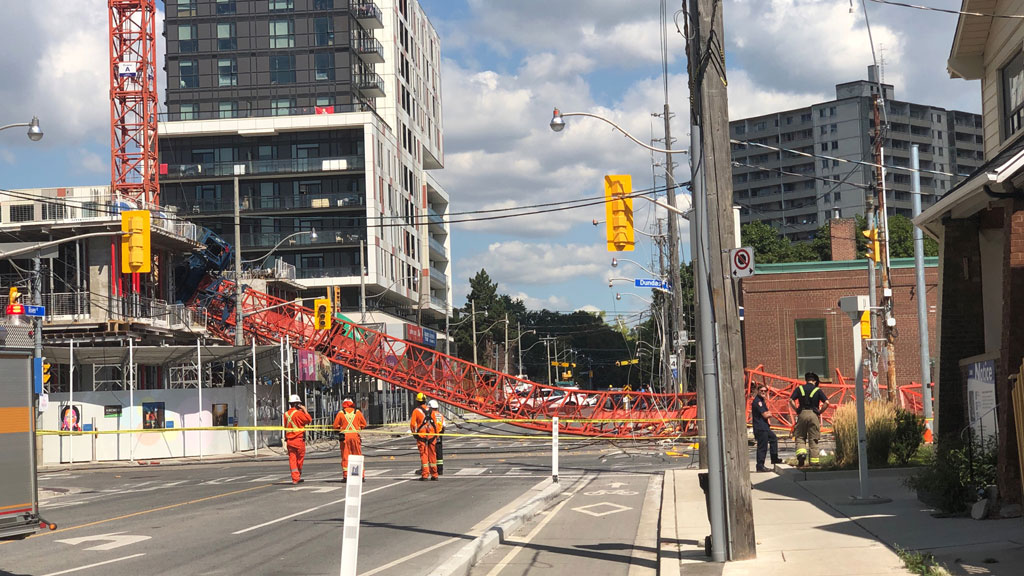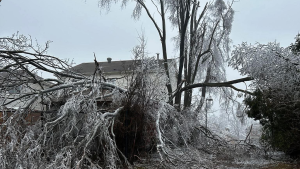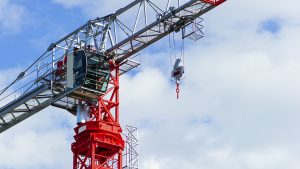The Ministry of Labour, Training and Skills Development (MLTSD) recently launched a consultation to “modernize and clarify” existing requirements on the use of cranes set out in existing Ontario legislation.
Two industry stakeholders want to ensure those with firsthand experience have their say.
Mike Gallagher, business manager at the International Union of Operating Engineers (IUOE) Local 793, said the IUOE has been focused on improving tower crane safety for years.
“We did a whole consultation back in 2008 and there was a 45-page document that was given to the Ministry of Labour in 2013 with many recommendations, changes to the construction projects Regulation 213/91 under the Occupational Health and Safety Act for improvements for tower crane safety,” Gallagher said. “It’s only just recently that they have acted.”
Staff at the IUOE are currently investigating crane incidents, both mobile and tower, which have occurred over the last five years. Preliminary numbers show 40 incidents have occurred including nine injuries and seven fatalities.
The current provincial consultation, called Improving Health and Safety Requirements relating to Tower Cranes, focuses on specific sections in the Occupational Health and Safety Act, including the Construction Projects Regulation, O. Reg. 213/91 and O. Reg. 420/21: Notices and Reports Under Sections 51 to 53.1 of the Act – Fatalities, Critical Injuries, Occupational Illnesses and Other Incidents.
Sahil Shoor, a partner with Gowling WLG, recently authored an article on the subject with the help of Michael Piaseczny, a summer law student.
“We wanted to educate the folks in the construction world to make sure that they are aware that this consultation process has started and if they have something to say that they participate,” said Shoor. “Now is the time while the consultation is ongoing for feedback to be provided by folks who have the required skillset and who deal with occupational health and safety issues on a daily basis.”
There have been numerous incidents with tower cranes across Canada in the last two years, with several collapses in Toronto and the most recent crane collapse that killed five people at a construction site in downtown Kelowna, B.C. in July.
“Health and safety requirements are so important,” said Shoor. “We want to make sure construction workers on the construction site are returning to their families at the end of the day and there are no health and safety accidents happening.”
A consultation paper issued by the MLTSD outlines 20 recommendations with six target areas of focus including:
- introducing new notification requirements relating to the use of tower cranes;
- clarifying requirements for design, installation, maintenance and inspection requirements including record keeping;
- referencing the Professional Engineers of Ontario’s practice standard for tower crane review and clarifying the role and responsibilities of professional engineers in the design, erection and inspection of tower cranes, including certifying tower cranes as safe to use after repairs or following fault diagnosis;
- introducing new, and updating existing, references to relevant national and international standards relating to the design and operation of tower cranes;
- updating and introducing new training requirements for crane operators; and
- addressing advances in technology by adding new and specific requirements for self-erecting tower cranes.
Gallagher states the IUOE is dedicated to investigating incidents and ensuring change will occur.
“There are really three main reasons why an accident will happen. It could be mechanical failure, it could be operator rigger error or it could be environmental or weather related,” Gallagher said. “For mechanical failure…10 accidents were caused by that. For operator rigger error there were 17 and for weather, environmental there were five. And cause of accident unknown is eight, which is the reason why we are still engaged and investigating that.
“We need to drill down and find out what was the actual cause.”
The IUOE plans to make a number of recommendations to the MLTSD during the consultation process. Since announcing the winding down of the Ontario College of Trades, studies have shown a lack of enforcement issues when it comes to licensing, Gallagher noted.
One recommendation they have already been making to the government deals with the mechanical fitness of equipment and the need to retire equipment after a certain period of time.
“There is no real regulation that says that a crane has to be retired after a certain period of time, so you end up having equipment that has more and more maintenance issues,” Gallagher explained. “In some cases the manufacturer has gone out of business…that means when there is a problem there is no way to find replacement parts.
“Another one we would like to see to further reduce incidents of user error is more training,” he added.
Comments can be emailed to WebHSPolicy@ontario.ca. The deadline to submit feedback on the regulatory proposal is Sept. 13.
Follow the author on Twitter @DCN_Angela.











Recent Comments
comments for this post are closed